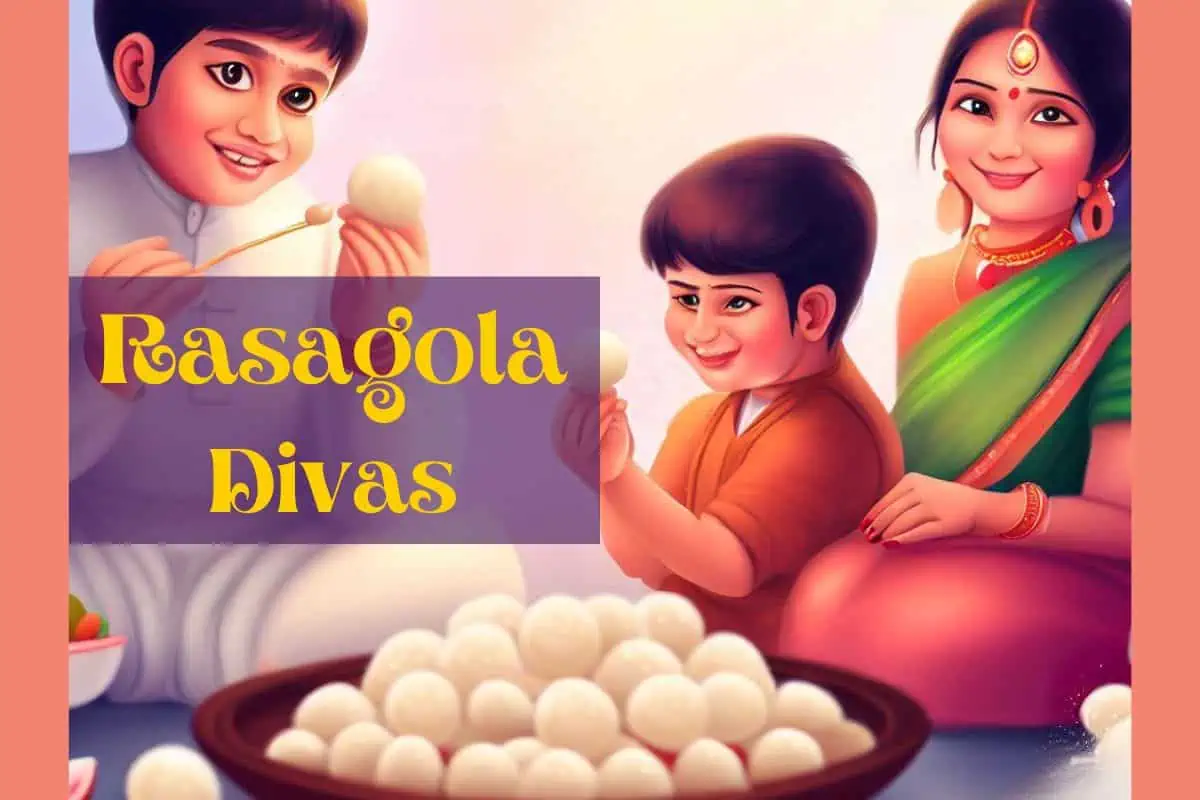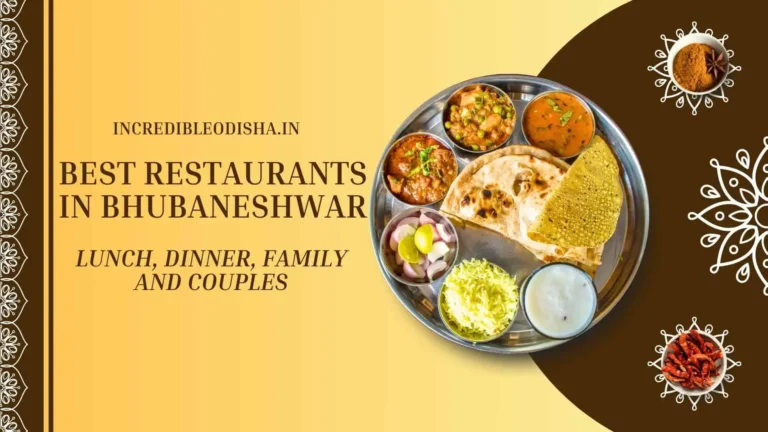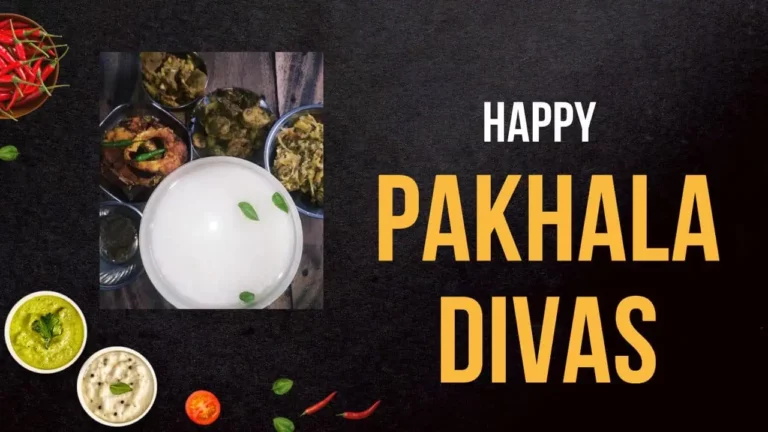The Sweetness of Odisha: Rasagola Dibasa (Rasagola Divasa) 2023
It’s a bit hard to express the feeling of biting into a fresh, warm Rasagola – a syrupy, spongy, and sweet milky ball that seems to dissolve almost instantly in your mouth. This divine dessert has its roots in the beautiful eastern state of India – Odisha.

Today, I want to take you on a gastronomic and cultural journey as we delve into the fascinating celebration known as Rasagola Dibas a.k.a Rasagola Divasa, a day devoted to this humble, yet spectacular, sweet delicacy. Rasagola Dibasa will be celebrated on 1st July 2024.
Consider reading: Best Restaurants in Bhubaneswar
The Genesis: When Did Rasagola Divasa Start?
Rasagola Divas, translated as “Rasagola Day“, was inaugurated in the year 2015. It is celebrated on the second day of the Hindu month of Shravana, coinciding with the popular Puri Rath Yatra (Chariot Festival).
There’s a fascinating reason behind this synchronization. The day is deeply connected to the widely accepted belief that Lord Jagannath offers Rasagolas to Goddess Lakshmi on this day, to placate her after his return from the nine-day Rath Yatra without her.
This offering, popularly known as ‘Niladri Bije’, forms the cultural backbone of Rasagola Divas.
The Celebration: How is Rasagola Divasa Celebrated?
Rasagola Divas has grown into a grand celebration in Odisha, bringing together communities, sweet-makers, and food enthusiasts from all corners of the state and beyond.
In 2023, Rasagola Divas will be celebrated on 1st July 2024.
The day begins with the ritual of ‘Niladri Bije’, where Rasagolas are offered to Goddess Lakshmi at the Puri Jagannath temple.
In homes across Odisha, families gather to make homemade Rasagolas, following traditional recipes handed down generations. Sweet shops also participate in the festivities, introducing new flavors and variations of the iconic sweet.
Perhaps the most exciting part of Rasagola Divas is the Rasagola competition, where professional chefs and amateur cooks showcase their culinary talents.
It’s an exciting day, filled with creativity, camaraderie, and of course, plenty of delicious Rasagolas to taste.
The festival reaches far beyond Odisha as well, with people worldwide sharing pictures and stories of their Rasagolas on social media platforms.
The Cultural Significance: Rasagola, More than Just a Sweet
Beyond its heavenly taste, Rasagola holds a profound cultural significance in Odisha. It’s an integral part of the state’s cuisine, rituals, and folklore.
The tradition of Lord Jagannath offering Rasagola to Goddess Lakshmi showcases the rich and ancient heritage of Odisha, where food, faith, and festivals seamlessly blend.
Rasagola Divas also symbolizes the state’s pride in its culinary legacy and its desire to share this heritage with the world.
It’s a statement of the distinct identity of Odisha, its traditions, and its culinary expertise.
The Story of Lord Jagannath and His Love for Rasagola
Rasagola, a sugary delicacy that has captivated the palates of countless souls over generations, is more than just a dessert in Odisha.
It’s a slice of history, a smidgen of divinity, and a testament to the state’s unique culture.
The story dates back centuries, to a time when the towering edifice of the Jagannath temple in Puri resonated with the rhythmic chants of priests and devotees.
As the legend goes, Lord Jagannath, after a nine-day sojourn (Ratha Yatra) outside his abode, found the doors of his temple closed upon his return.
To appease his consort, Goddess Laxmi, who was miffed at being left behind, Lord Jagannath offered her Rasagolas.
This divine act of appeasement marks the birth of a tradition that has been celebrated over centuries, encapsulated in the form of ‘Rasagola Divas’.
Divine Connection: The Festival of Niladri Bije and Rasagola
The culmination of the Ratha Yatra, known as Niladri Bije, is when the divine connection of Rasagola truly unfolds.
The deities return to their sanctum and to placate Goddess Laxmi, Rasagolas are offered.
The temple air becomes fragrant with the sweet aroma of these spongy, syrup-laden delights, adding another layer to the divine aura of the occasion.
This ritualistic offering is not just about mending celestial hearts, but also a celebration of love and forgiveness, symbolized by the humble Rasagola.
The temple premises come alive as Rasagolas are distributed, turning the festival into a sweet gastronomic gala.
This divine connection between Niladri Bije and Rasagola is a testament to the age-old traditions and the timeless appeal of this heavenly sweet.
Consider reading: Jagannath Rath Yatra Festival
Pahala: The Heart of Rasagola Production
Why Pahala is Synonymous with Rasagola
Pahala, a small town located on the outskirts of Bhubaneswar, is a name that glistens with pride in the annals of Rasagola’s history. I still remember my first visit to Pahala.
The sights of countless sweet shops lined side by side, the smell of boiling milk mingling with sugar syrup, the incessant chattering of vendors, and the sight of glistening white Rasagolas are forever etched in my memory.
Over the years, Pahala has become the epicenter of Rasagola production, its name synonymous with this beloved sweet.
Rasagolas from Pahala is not just a dessert; they’re a testament to the town’s enduring love affair with this culinary art form, a romance that is evident in each bite of the soft, syrupy delight.
The Art of Rasagola Making in Pahala
Rasagola making in Pahala is an art form steeped in tradition. Watching the artisans at work is akin to witnessing a harmonious symphony being performed.
It’s mesmerizing to see them knead the chenna (cottage cheese) with just the right amount of pressure, roll it into perfect balls, and then cook them gently in bubbling sugar syrup.
Their deft hands, guided by years of experience, bring these simple ingredients to life, transforming them into the divine Rasagolas.
The process is rigorous and demands precision, patience, and a deep understanding of the craft.
It’s a fascinating experience, a testament to Pahala’s deep-seated culinary tradition, and its relentless commitment to preserving the timeless art of Rasagola making.
Consider reading: Famous Odisha Foods
Rasagola vs. Rasgulla: The Sweet Debate
Unraveling the Differences Between Rasagola and Rasgulla
Perhaps one of the most intriguing chapters in my culinary journey has been the ongoing debate between Rasagola and Rasgulla.
Though they might seem similar at first glance, there are subtle differences that set these two sweets apart. While both are made of chenna and soaked in sugar syrup, the texture and flavor profiles vary.
Odisha’s Rasagola is characteristically soft, less sweet, and has a unique, light texture that melts in your mouth, leaving a lingering taste of the delicious syrup.
On the other hand, West Bengal’s Rasgulla is spongier, sweeter, and has a denser consistency. The differences, though subtle, are an essential part of the cultural identities of the two states, making each sweet distinctively unique.
Historical and Culinary Perspectives: Resolving the Confusion
The debate around Rasagola and Rasgulla is also steeped in history and regional pride.
While Odisha claims Rasagola’s origins date back centuries with its association with Jagannath temple rituals, West Bengal’s argument is rooted in its 19th-century culinary history.
For me, the debate transcends beyond the confines of historical facts and figures.
It’s a celebration of India’s culinary diversity, where each region and each state has its own unique rendition of a similar dish, shaped by local customs, ingredients, and techniques.
And therein lies the beauty – the unity in diversity, the joy in savoring these diverse yet similar sweet treats.
Celebrating Rasagola Divas: A Statewide Affair
The Joyful Festivities on Rasagola Divas
The celebration of Rasagola Divas, which coincides with Niladri Bije, is a grand affair that engulfs the entire state of Odisha.
It’s a day when every corner of the state, from the sacred temples to bustling streets, echoes with the shared love for Rasagola.
Colorful processions, cultural performances, and, most importantly, the distribution and consumption of Rasagolas mark the day.
I recall attending a Rasagola eating competition, a vibrant spectacle where people of all ages reveled in the shared joy of devouring this sweet delight.
It’s a day of unity, a day of pride, and a day of cherishing the rich cultural heritage of Odisha, all centered around the humble Rasagola.
Documenting the Celebrations: From Temples to Streets
The beauty of Rasagola Divas lies not only in the grand festivities but also in the simple, heartfelt celebrations that play out in homes, neighborhoods, and communities across Odisha.
Each celebration is a story in itself – of traditions, of togetherness, of shared joy, and of a sweetness that binds hearts and communities.
Documenting these celebrations has been an incredibly rewarding experience, offering a window into the deep-rooted cultural legacy and the unadulterated love for Rasagola that is embedded in every Odia heart.
The Global Recognition of Odisha Rasagola: Rasagola GI Tag
The GI Tag for Odisha Rasagola: What it Means
The Geographical Indication (GI) tag conferred on Odisha Rasagola in 2019 marked a significant milestone in the sweet’s journey.
This recognition was not just about distinguishing Odisha’s Rasagola from others; it was an acknowledgment of its unique characteristics, its cultural significance, and the centuries-old tradition it embodies.
The GI tag underscored the global recognition of Odisha’s culinary heritage, amplifying the state’s pride and the sweet’s popularity.
How the World Came to Know About Odisha’s Rasagola
The journey of Rasagola, from the sacred temples of Puri to the global stage, is a testament to the power of cultural exchange.
Over the years, tourists, scholars, and food enthusiasts have savored the sweetness of Odisha’s Rasagola, carrying its legend across continents.
The spread of the Odia diaspora, the global recognition through the GI tag, and the ever-increasing interest in Indian regional cuisines have further propelled Rasagola’s global fame.
Today, Odisha’s Rasagola is not just a regional sweet; it’s a global ambassador of the state’s rich and diverse culinary heritage.
Final Thoughts on Rasagola Divasa
Celebrating Rasagola Divasa is an experience filled with sweetness, tradition, and community spirit.
It’s more than just a day; it’s a symbol of Odisha’s rich culture, history, and culinary tradition.
As the luscious taste of a Rasagola melts in your mouth, it tells a story of faith, craftsmanship, and heritage.
Next time you come across a Rasagola, I encourage you to pause for a moment and appreciate the journey it has made, from the sacred temples of Puri to being a globally recognized dessert.
And if you ever get a chance to participate in the Rasagola Divas, don’t miss it! It’s a once-in-a-lifetime experience to immerse yourself in the vibrant, sweet culture of Odisha.
Remember, behind every bite of this divine dessert, there’s an enriching tale waiting to be unraveled. Enjoy your Rasagola, enjoy the story!
Follow us on Instagram: Incredible Odisha
FAQs about Rasagola Divasa
What is Rasagola Divasa?
Rasagola Divas, also known as Rasagola Day, is an annual celebration in the Indian state of Odisha that is centered around the sweet delicacy Rasagola (Rasgulla). It is celebrated on the same day as the Hindu festival of Niladri Bije.
When is Rasagola Divasa celebrated?
Rasagola Divas is celebrated on the day of Niladri Bije, the last day of the Jagannath Ratha Yatra. The date varies each year as it follows the Hindu lunar calendar, but it typically falls in the month of July.
What is the significance of Rasagola Divasa?
The celebration of Rasagola Divas commemorates the traditional ritual in the Jagannath temple, where Lord Jagannath offers Rasagola to his consort Goddess Lakshmi. It’s also a day to celebrate Odisha’s rich culinary tradition and the popular dessert Rasagola.
How is Rasagola Divasa celebrated?
On this day, people in Odisha and elsewhere enjoy Rasagolas and share them with friends and family. Social media is flooded with pictures of this sweet, and local sweet shops often have special offerings. Many also visit the Jagannath temple to partake in the rituals.
What is the history of Rasagola Divasa?
Rasagola Divas began to be widely celebrated in 2015 after a debate over the origin of Rasagola between Odisha and West Bengal. This day aims to affirm the historical significance and traditional association of Rasagola with Odisha’s Jagannath temple rituals.
What is the dispute over the origin of Rasagola?
What is the dispute over the origin of Rasagola? The dispute over the origin of Rasagola has been a long-standing issue between the states of West Bengal and Odisha. Both states claim to be the originator of this sweet dessert. In 2019, the Geographical Indication (GI) tag for ‘Odisha Rasagola’ was granted to Odisha, acknowledging its unique recipe and cultural significance.
What is a Geographical Indication (GI) tag?
A Geographical Indication (GI) tag is a sign used on products that have a specific geographical origin and possess qualities or a reputation that are due to that origin. It plays a crucial role in maintaining the quality and authenticity of a product, like in the case of ‘Odisha Rasagola’.
How is Rasagola made?
Rasagola is made by curdling milk and then separating the whey to create cheese or chhena. This chhena is rolled into small balls and then boiled in a sugar syrup until they become light and spongy.
Are there different types of Rasagola?
Yes, there are different variations of Rasagola, primarily distinguished by color. The ‘Odisha Rasagola’ is typically white, whereas the ‘Bengal Rasgulla’ or ‘Rosogolla’ is often light brown or cream-colored due to the caramelization of sugar.
Where can I try Rasagola in Odisha?
Rasagola is widely available in sweet shops throughout Odisha. It is particularly popular in the cities of Bhubaneswar and Puri. Special occasions like Rasagola Divas often feature a wide variety of Rasagolas to try.


